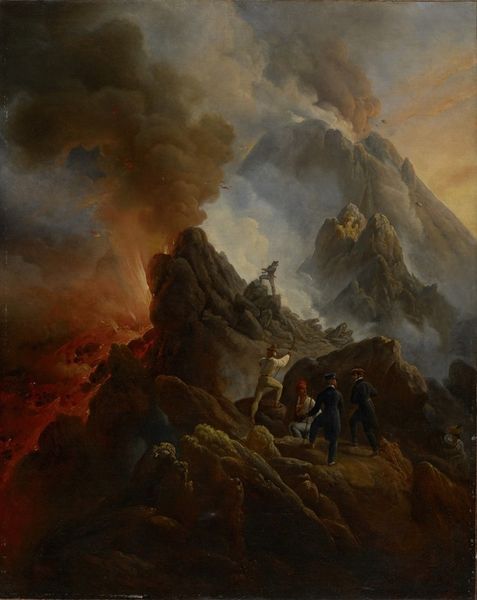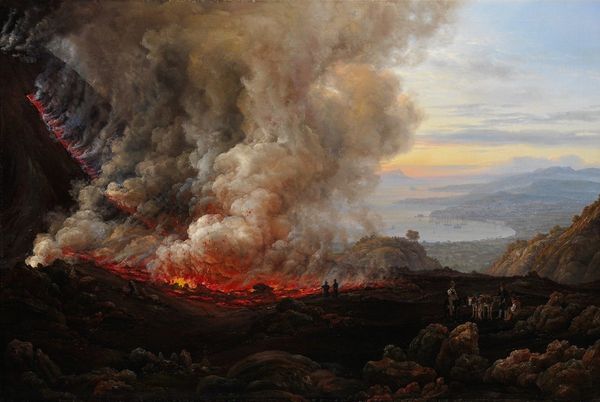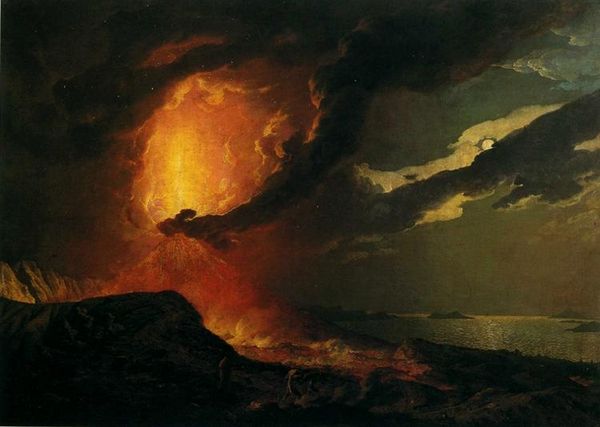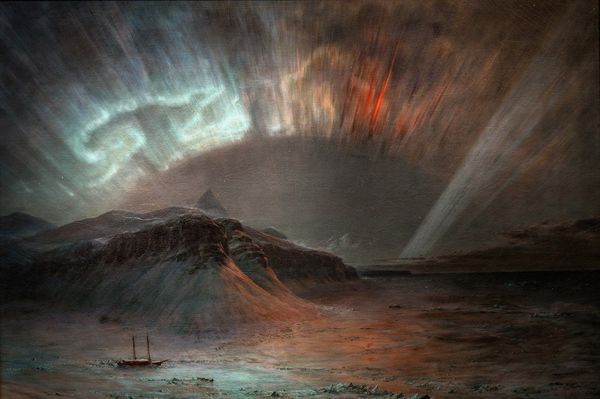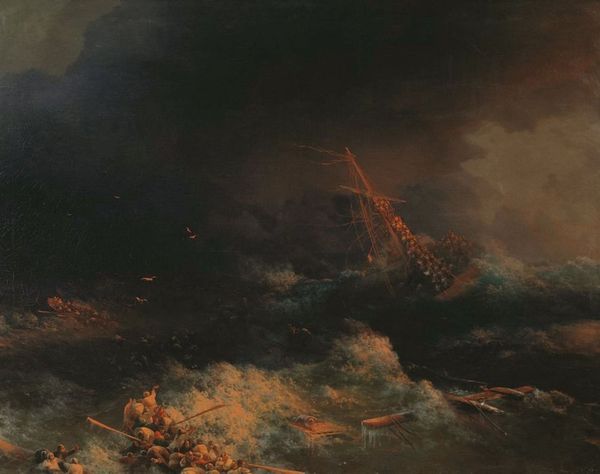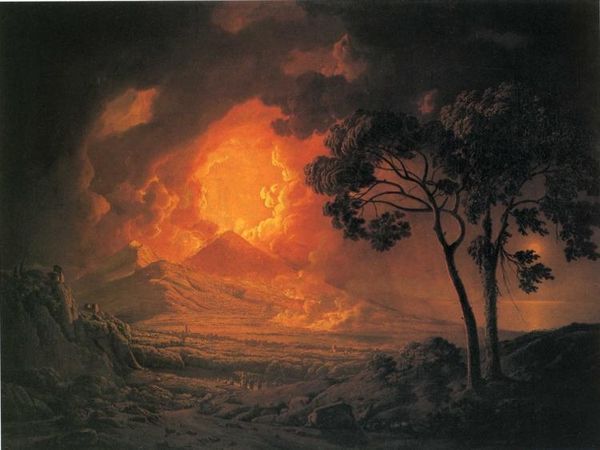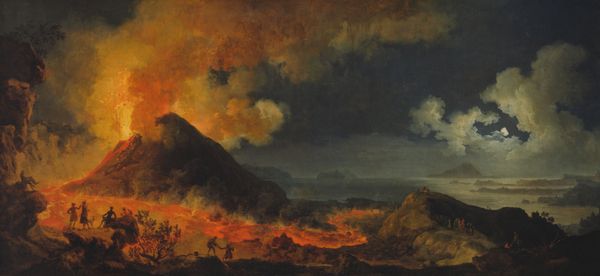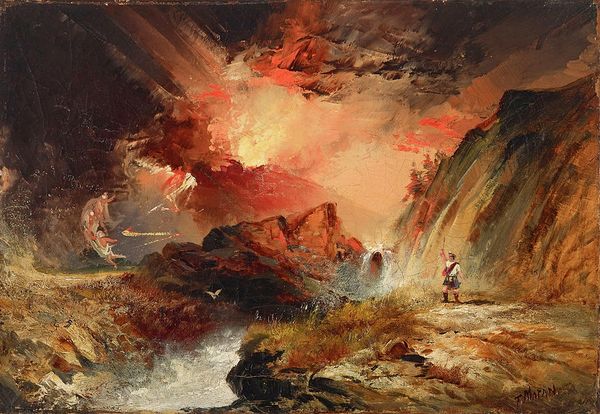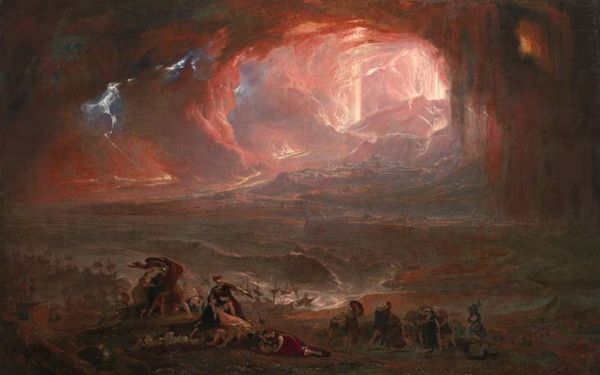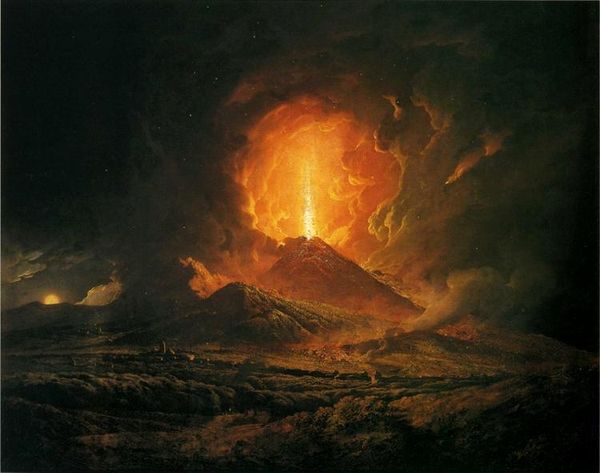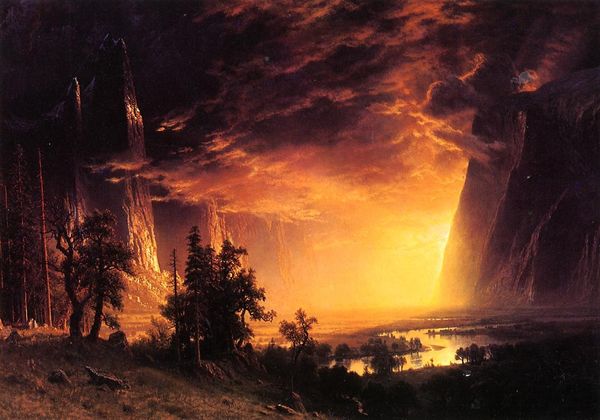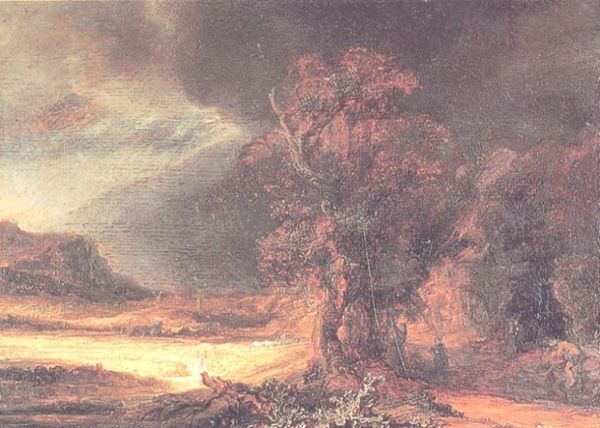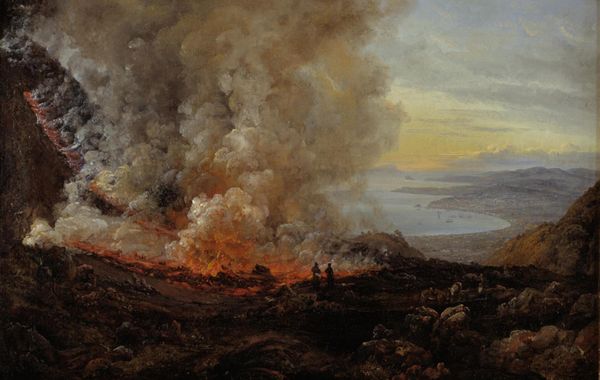
Copyright: Public Domain: Artvee
Editor: Albert Bierstadt’s “Mount Vesuvius at Midnight,” painted in 1868 using oil on canvas… It’s quite striking. The colors are so dramatic, almost theatrical! There’s such an overwhelming sense of impending doom. What emotions or ideas does this piece spark for you? Curator: Ah, Bierstadt. He captures something truly visceral, doesn't he? For me, it's this feeling of standing at the edge of understanding. Vesuvius isn't just a mountain here, is it? It's the simmering subconscious, that explosive potential that we all hold within. Do you see how he juxtaposes the raw power of the volcano with the serene, almost desolate foreground? Editor: Yes, there is this bizarre sense of calm coexisting with utter destruction. Like watching a disaster unfold in slow motion. Curator: Exactly! Bierstadt invites us to contemplate our own mortality, and perhaps even to find a strange beauty within it. The Romantic painters were really fond of this sublime interplay of terror and beauty! Editor: I can see that now. It’s funny – it almost feels less like a landscape painting and more like an abstract portrayal of human fear. Curator: Precisely! And what a potent portrayal it is! He dares us to face the chaos and maybe, just maybe, understand something deeper about ourselves in the process. Editor: This conversation really shed some light on how even landscape paintings can reveal insights into humanity. Thank you. Curator: The pleasure was all mine! It's when art challenges us that we truly grow, isn’t it?
Comments
No comments
Be the first to comment and join the conversation on the ultimate creative platform.
